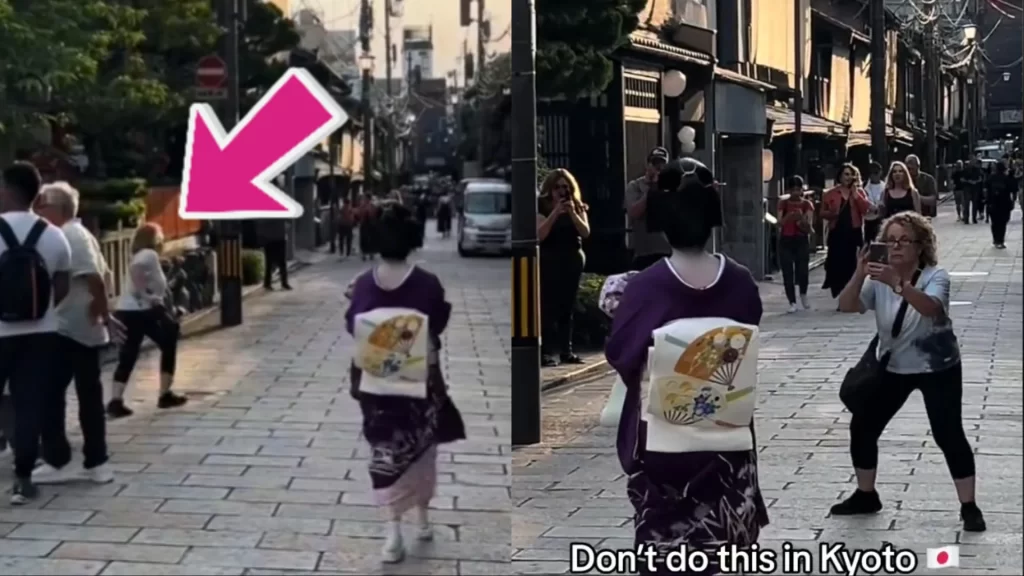A video on TikTok by user zozalajail has gone viral, with people voicing their dismay and outrage over the lack of cultural respect and tourism etiquette. In the short clip posted, a foreign tourist is seen aggressively chasing a geiko in Kyoto, Japan.
What happened?
A foreigner is seen running after and in front of the geiko three times, blocking her way. The video shows how the foreigner is seemingly oblivious to the discomfort that she is causing. We can see the geiko moving away from the woman, but the woman is persistent in taking a photo or video as if the geiko is a public attraction.
https://www.tiktok.com/@zozalajail/video/7372133091533442312
Public Outrage
The video quickly went viral, with many TikTok users expressing outrage over this behavior. Many criticized the foreign woman and tourism in general, pointing out that people seemingly fail to understand that we must respect the customs and traditions of each country we visit.

What is a geiko?
- Also known as a geisha in other parts of Japan, a geiko is a traditional female entertainer skilled in various Japanese arts, such as classical music, dance, and games.
- Geikos wear elaborate kimonos, distinctive hairstyles, and white face makeup, symbolizing their profession.
Geikos are highly trained artists who entertain guests through their refined skills in traditional Japanese arts. They perform at teahouses (ochaya) and private gatherings, engaging guests with music, dance, and conversation. The training is rigorous, often starting from a young age, and involves years of practice and dedication.
Kyoto, particularly the historic Gion district, is renowned for its geikos. This area attracts tourists eager to witness these performers’ elegance and cultural significance.
What is the difference between a geiko and a geisha?
- Geisha: This is the broader term encompassing all-female Japanese performing artists trained in traditional arts like dance, music, singing, and conversation.
- Geiko: This term specifically refers to geisha in Western Japan, particularly in the Kyoto and Kanazawa regions. It translates to “woman of art” in the Kyoto dialect.
Essentially, all geiko are geisha, but not all geisha are geiko.
